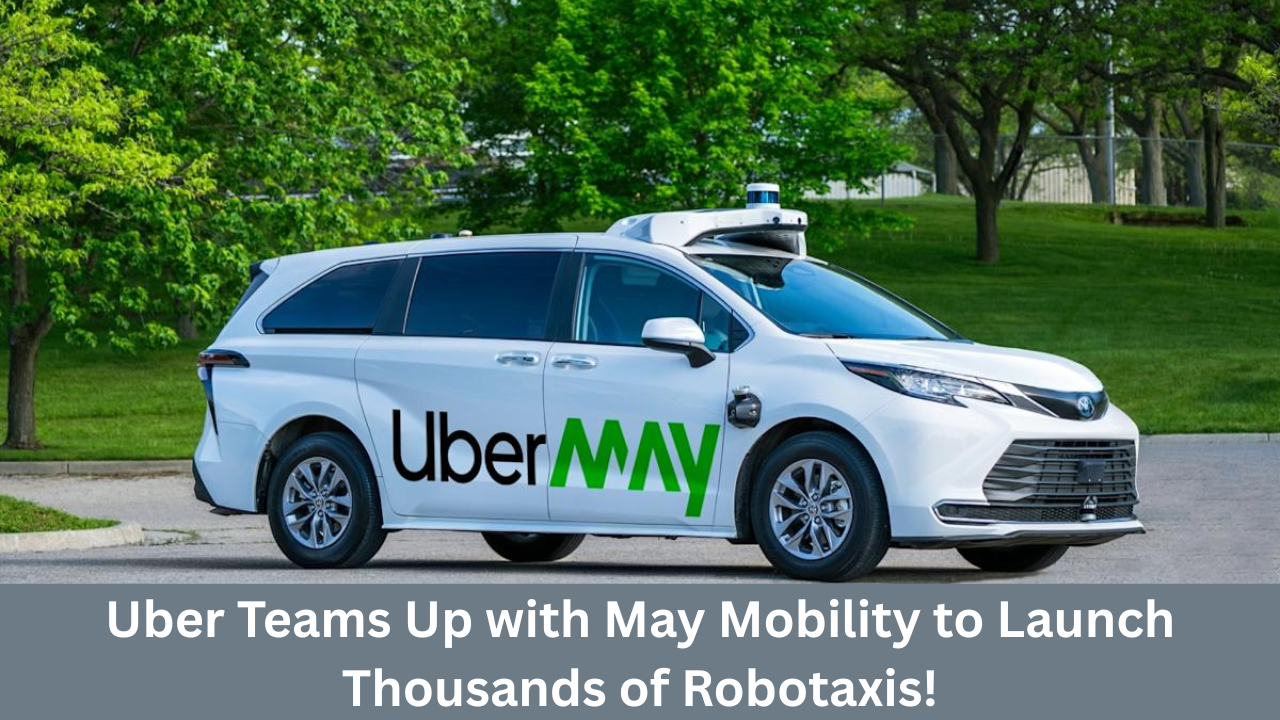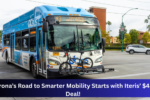Uber is making big strides toward the future of transportation by teaming up with May Mobility, an autonomous vehicle operator based in Ann Arbor, Michigan. This partnership aims to bring thousands of robotaxis to the streets of U.S. cities, making autonomous ridesharing more accessible to everyday consumers.
The collaboration signals a major push towards self-driving cars being part of the mainstream transportation infrastructure. As the autonomous vehicle industry continues to grow, this deal positions both Uber and May Mobility as key players in the future of transportation.
The Growing Influence of Autonomous Vehicles
Autonomous vehicles, or self-driving cars, have captured the attention of the automotive and tech industries for years. The promise of driverless cars offers various benefits, including reducing traffic accidents caused by human error, improving fuel efficiency, and providing more mobility options for people who cannot drive. In recent years, autonomous vehicles have gone from being a futuristic idea to something that is actively being developed and deployed on the streets.
May Mobility has been at the forefront of this shift. While many autonomous vehicle companies have focused on developing technology for passenger vehicles, May Mobility has chosen a different route. The company has partnered with cities, businesses, and local governments to provide autonomous shuttle services. They have also focused on areas that are well-suited for self-driving cars, such as business districts, college campuses, and residential communities.
This approach has allowed May Mobility to learn and adapt to the needs of its riders while working within regulatory frameworks. It has helped the company avoid many of the challenges faced by others who have attempted to operate self-driving cars in less controlled environments, like dense urban areas.
Uber’s Role in the Autonomous Vehicle Market
Uber has long advocated for integrating autonomous vehicles into its fleet. As the largest ridesharing company globally, Uber has recognised the potential benefits of self-driving cars for both its business and customers. In addition to improving efficiency, autonomous vehicles could also reduce Uber’s reliance on human drivers, which would reduce costs and create a more scalable business model.
In recent years, Uber has ramped up its efforts to integrate autonomous vehicles into its platform. The company has entered into numerous partnerships with other autonomous vehicle operators, including well-known companies like Waymo, Motional, and Volkswagen. These partnerships allow Uber to offer a wide variety of self-driving cars on its platform and position itself as a leader in the rapidly evolving autonomous vehicle market.
Now, with the deal with May Mobility, Uber is set to take another significant step forward in expanding its autonomous vehicle offerings. As part of the deal, May Mobility will deploy “thousands” of autonomous vehicles on Uber’s ride-hailing platform across multiple U.S. cities. The companies have already outlined plans for how the deployment will unfold, starting with a pilot program in Arlington, Texas, in 2025.
How the Deal Works
The deal between Uber and May Mobility is important for both companies. For May Mobility, this partnership provides the opportunity to scale its operations and reach a much larger audience. The company will be able to leverage Uber’s existing infrastructure, including its app and customer base, to offer its autonomous vehicles to riders across multiple cities.
The rollout will begin in Arlington, Texas, where May Mobility will deploy its self-driving cars with safety drivers in place. This initial phase is designed to ensure the vehicles can safely navigate the streets before transitioning to full autonomy. In the coming years, the companies plan to expand to other cities, with a focus on regions where Uber already has a large presence.
May Mobility’s fleet will consist of autonomous Toyota Sienna minivans retrofitted with the company’s proprietary autonomous driving hardware and software. The fleet will initially serve geofenced areas—places where the environment is well-mapped and controlled, making it easier for self-driving cars to operate safely. These areas could include college campuses, business districts, and even residential communities, which May Mobility already serves.
May Mobility’s Unique Approach
What sets May Mobility apart from other autonomous vehicle operators is its focus on building relationships with businesses and local governments. The company has established itself as a reliable partner in the transportation industry by offering autonomous shuttle services that cater to specific communities, including businesses and government agencies.
May Mobility’s work in local communities is particularly important because it helps address some of the challenges that autonomous vehicle operators face when entering urban markets. Cities are often wary of new transportation technology because of concerns about safety, traffic congestion, and job displacement. By collaborating closely with local governments and businesses, May Mobility has been able to address these concerns proactively and ensure that its operations fit within existing infrastructure and regulations.
This business-focused approach is one reason May Mobility is able to maintain a steady growth trajectory. The company has raised over $383 million in funding across nine rounds, with major investors including Toyota and BMW. With Uber’s support, May Mobility is now poised to expand its services to a broader audience, including individual consumers who rely on rideshare services like Uber.
Expanding the Scope: May Mobility’s New Fleet and Future Plans
In addition to its partnership with Uber, May Mobility is continuing to expand its fleet to meet the demands of the growing autonomous vehicle market. The company recently announced that it would be adding electric minibuses to its fleet. These vehicles, which can carry up to 30 passengers, will be used to transport larger groups of people in cities that are experiencing high demand for shared rides. May Mobility plans to launch these minibuses in 2026, further expanding its reach and increasing its ability to serve more customers.
This move is part of May Mobility’s larger plan to diversify its offerings and create a more scalable transportation model. By introducing larger vehicles, the company will be able to serve more passengers in areas where ride-sharing is in high demand. At the same time, May Mobility will continue to focus on providing a high level of service for both individuals and businesses, ensuring that its autonomous vehicles are a viable alternative to traditional public transportation.
A Bright Future for Autonomous Vehicles
The partnership between Uber and May Mobility is just the beginning of a larger trend in the autonomous vehicle industry. As more companies enter the market and collaborate on self-driving car technology, we’ll likely see more partnerships like this one in the coming years. The combination of Uber’s massive ride-hailing platform and May Mobility’s autonomous vehicle expertise could pave the way for the widespread adoption of driverless cars.
For Uber, this deal is an important step in its efforts to become the go-to platform for autonomous vehicles. By partnering with May Mobility, Uber can offer a range of self-driving options for its users, from robotaxis to delivery vehicles, all under one roof. This could help Uber maintain its dominance in the ridesharing space, even as autonomous cars become more commonplace.
For May Mobility, the deal with Uber represents a major opportunity to scale its operations and reach a wider audience. By joining forces with Uber, May Mobility is taking its first step toward making autonomous vehicle ridesharing a regular part of daily life for riders across the U.S.
Conclusion
The future of transportation is rapidly evolving, and the partnership between Uber and May Mobility is a testament to the growing role of autonomous vehicles in our daily lives. With plans to deploy thousands of robotaxis in U.S. cities, Uber and May Mobility are leading the way in bringing self-driving cars to the masses. As the technology continues to improve and the regulatory environment evolves, it’s clear that partnerships like this one will shape the future of transportation.
As we move closer to a world where self-driving cars are a normal part of the transportation landscape, Uber, May Mobility, and other players in the autonomous vehicle market can expect more developments. This partnership is just one example of the exciting possibilities that lie ahead.

Deepak Grover is a dedicated content writer at OTE News, specializing in government affairs, public policy, and current events. With a keen eye for detail and a passion for factual reporting, he ensures readers receive accurate and insightful news. Deepak holds a degree in Political Science and has experience in research-driven journalism.
When not writing, he enjoys reading historical books, exploring hiking trails, and staying updated with global political trends. His commitment to ethical journalism makes him a trusted voice at OTE News.




